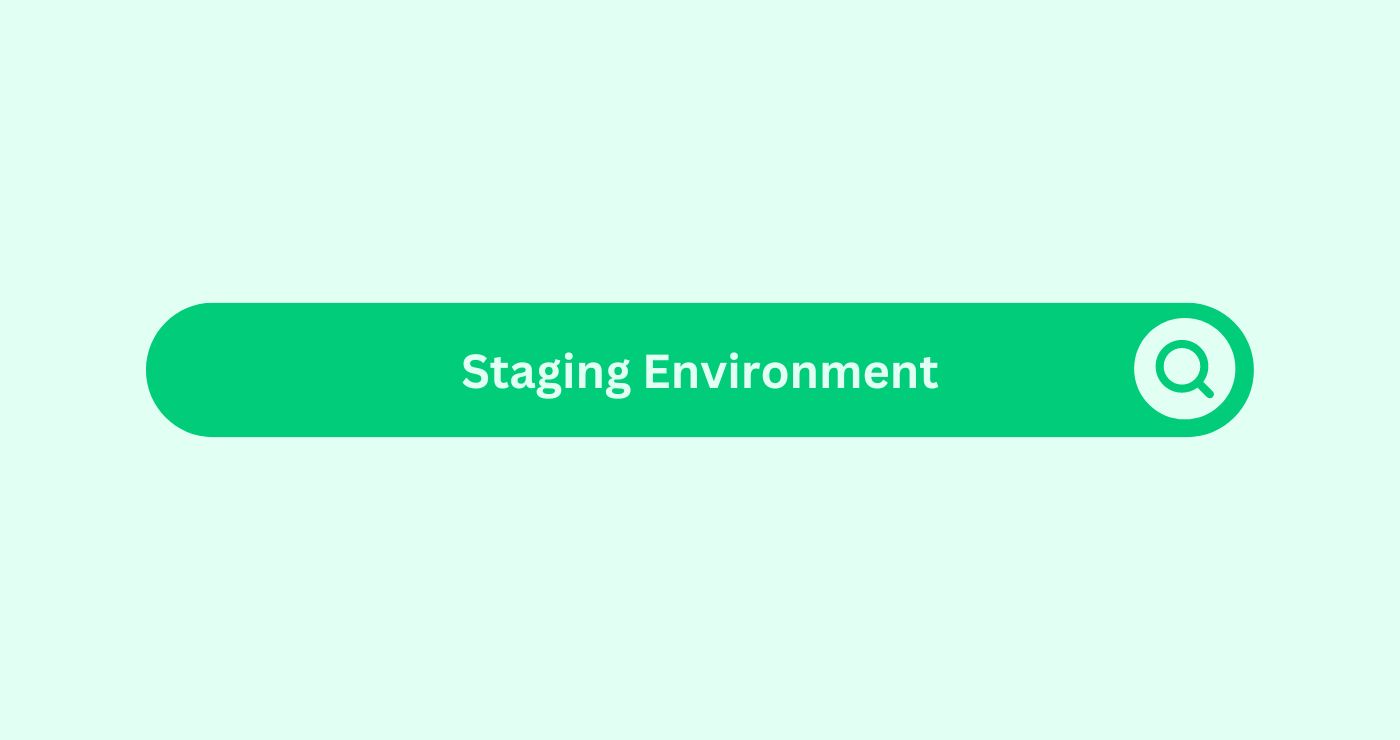Definition
A Staging Environment in the SEO space is a replica of a website or web application’s production environment, used for testing changes, updates, and new features before deploying them live. It allows developers and SEO professionals to assess the impact of modifications on website performance, user experience, and search engine visibility in a controlled environment.
Example of how you can use Staging Environment
For instance, before implementing SEO-related changes such as website restructuring, URL updates, or content revisions on the live website, they can be first applied to the staging environment. This enables thorough testing of the changes’ effects on SEO metricsWhat are Metrics in the context of SEO? Metrics in SEO refer... such as crawlability, indexability, and ranking performance without risking negative impacts on the live site’s visibility.
Key Takeaways
- Risk Mitigation: Staging environments provide a risk-free space for testing website changes, minimizing the likelihood of unintended consequences or disruptions to the live website’s SEO performance.
- Quality AssuranceDefinition Quality Assurance (QA) in the SEO space refers to...: By allowing comprehensive testing of SEO-related updates, staging environments help ensure that modifications are error-free, properly implemented, and aligned with SEO best practices before deploymentDefinition Deployment is the release of software updates and....
- Collaborative Development: Staging environments facilitate collaboration between developers, SEO specialists, and other stakeholders by providing a centralized platform for reviewing and approving changes before they go liveDefinition "Go Live" in social media marketing refers to the....
- Performance Benchmarking: SEO professionals can use staging environments to benchmark performance metricsWhat are Metrics in the context of SEO? Metrics in SEO refer... before and after implementing changes, enabling data-driven decision-making and optimization strategies.
- Safe Experimentation: Staging environments allow for experimentation with new SEO techniques, strategies, and tools without risking negative impacts on the live website’s search engine rankings or user experience.
FAQs
How does a staging environment differ from a production environment?
A staging environment is a non-public, mirrored version of the production environment used for testing and development purposes, while the production environment is the live, publicly accessible version of the website or application.
What types of changes can be tested in a staging environment for SEO purposes?
SEO-related changes such as website redesigns, URL structure updates, content additions or revisions, schema markupDefinition Schema markup's rich snippets attract more clicks... implementations, and serverDefinition A Server in the SEO space refers to a computer sy... configurations can be tested in a staging environment to assess their impact on SEO performance.
Can staging environments impact SEO directly?
Staging environments do not directly impact SEO as they are not publicly accessible to search engines. However, proper testing and validation of changes in staging can indirectly influence SEO by ensuring that only optimized and error-free modifications are deployed to the live website.
How can staging environments help prevent SEO disasters?
By allowing thorough testing and validation of changes before deploymentDefinition Deployment is the release of software updates and..., staging environments help identify and rectify potential issues or errors that could negatively impact SEO performance, thereby reducing the risk of SEO disasters on the live website.
Are there any best practices for managing staging environments in SEO workflows?
Best practices include maintaining separate staging environments for development, QA, and SEO testing, keeping staging environments up-to-date with production data and configurations, and implementing version controlDefinition Version control tracks code changes throughout we... systems to track changes effectively.
What are some common challenges associated with staging environments in SEO workflows?
Challenges may include discrepancies between staging and production environments, data synchronization issues, version controlDefinition Version control tracks code changes throughout we... complexities, and the need for thorough regression testing to ensure changes do not negatively impact SEO performance.
Can staging environments be used for A/B testing and SEO experiments?
Yes, staging environments can be utilized for A/B testingDefinition A/B Testing, or split testing, compares webpage v... and SEO experiments by deploying different versions of web pages or content variations and measuring their impact on SEO metricsWhat are Metrics in the context of SEO? Metrics in SEO refer... such as trafficDefinition In the context of SEO (Search Engine Optimisation..., engagementDefinition Engagement in content marketing refers to the deg..., and conversionDefinition In the realm of SEO, Conversion refers to the pro... rates
How can SEO professionals collaborate with developers in staging environment testing?
SEO professionals can collaborate with developers by providing guidance on SEO best practices, reviewing proposed changes for potential SEO implications, and conducting thorough testing of SEO-related modifications in the staging environment.
Is it necessary to set up separate staging environments for different websites or projects?
Depending on the complexity and requirements of each project, setting up separate staging environments may be beneficial to ensure isolation, scalability, and efficient testing of changes specific to each website or project.
What steps should be taken if an issue is discovered in the staging environment during SEO testing?
If an issue is discovered, it should be documented, prioritized, and communicated to the relevant stakeholders for resolution. Depending on the severity of the issue, it may require further investigation, debuggingDefinition Debugging is the process of fixing errors in code..., and testing before being addressed and deployed to the live website.




